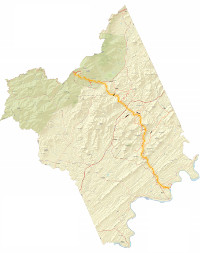by Mary Eiserman | May 27, 2025 | Clean Energy, Energy
Almost 10% of all U.S. electricity is sent across state lines in the lower 48. Twenty-five states produce more electricity than they consume and export electricity to states where consumption exceeds supply. Virginia imports 36% of the electricity used in the state, making it the largest electricity importer in the continental U.S. Due to all the data centers being built, the increase in the demand for electricity in Virginia will be twice the increase predicted for the rest of the country. In fact, unconstrained demand for power in Virginia could double within the next 10 years.
Virginia now imports 40% of our power needs versus 18% in 2020, and the cost of imported power is 10 times higher than it was during the previous year, but half of solar projects proposed in Virginia were rejected or withdrawn.
Virginia Tops California as Nation’s #1 Electricity Importer Virginia Solar Summit Blog
by Mary Eiserman | May 18, 2025 | Clean Energy, Energy
Water Use: About 40% of energy data centers use goes to cooling. In 2021, Virginia Tech found that nearly half of US data centers then in existence were fully or partially powered by power plants located within water-stressed regions.
Generative AI search tools consume ten times the electricity of a typical Google search, according to the International Energy Authority. And most AI answers today are riddled with errors, researchers at Columbia Journalism Review’s Tow Center for Digital Journalism found recently. Leading AI-driven search engines incorrectly answered more than 60% of test queries.
Power Use & Costs:
1) Siting a data center properly can improve the affordability of electricity for domestic customers while reducing overall grid emissions.
2) Locating a data center near a renewable energy source and close to an existing generator with an approved grid connection protects customers from paying for infrastructure upgrades.
3) Moving AI systems from the cloud to your phone can mean a 100 to 1,000-fold reduction in energy consumption per task.
By Mark Harris for Anthropocene, March 20, 2025
Summary by Susan McSwain






